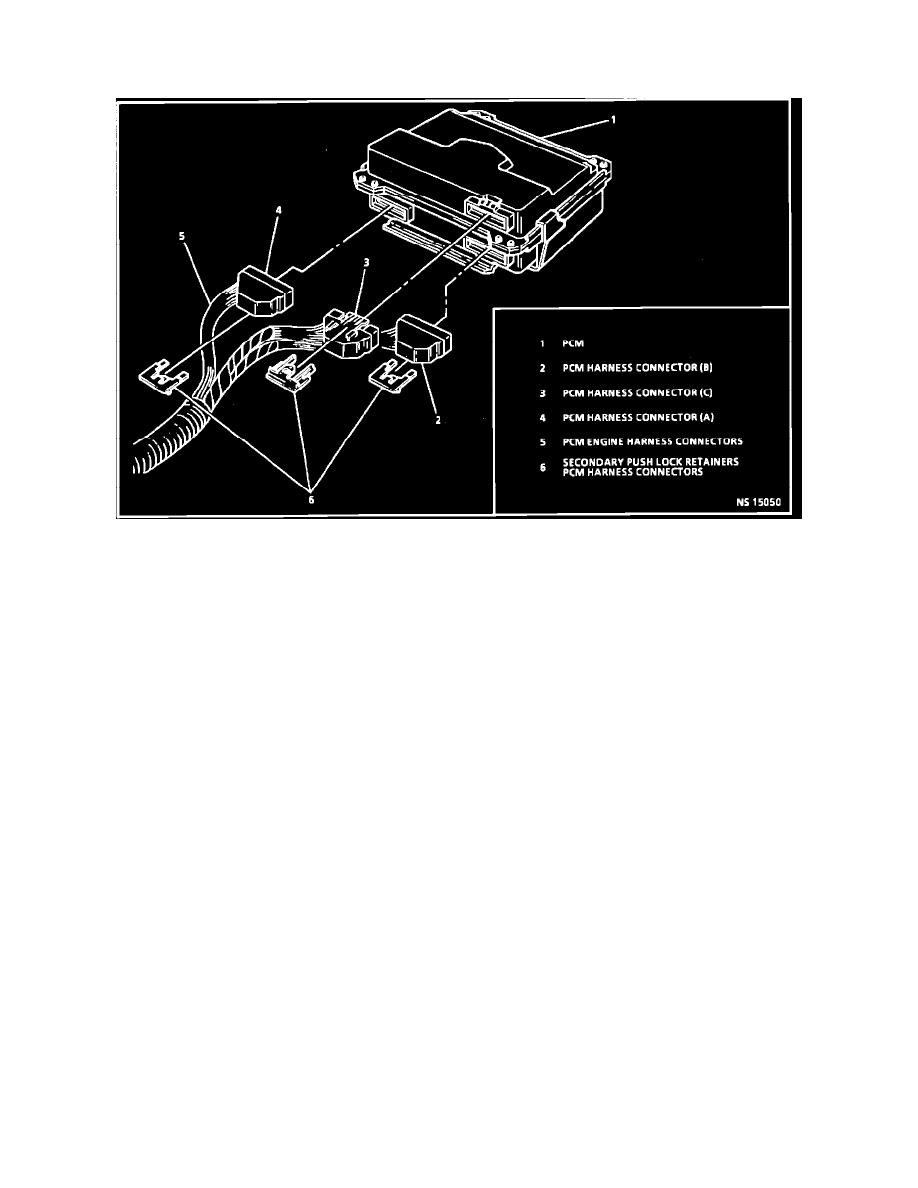Lumina V6-191 3.1L VIN T MFI (1993)

Engine Control Module: Description and Operation
California Emissions (GEN-II S)
Powertrain Control Module
GENERAL DESCRIPTION
The Computer Command Control System (C3) for vehicles with fuel injection is a computer controlled multiport electronic fuel injection, ignition
and emission control system. The heart of the system is a computer referred to as a "Powertrain Control Module" or PCM (in previous years
referred to as Electronic Control Module - ECM.) The PCM monitors operating conditions like engine speed/load and air/fuel ratio through
various engine sensors, including an exhaust gas oxygen sensor, and controls the following:
^
Fuel Delivery (pump) and Fuel Injection System
^
Ignition / Electronic Spark Timing (EST)
^
Electronic Spark Control (ESC - knock sensor)
^
Air Conditioning Compressor Clutch
^
Engine Cooling Fan(s)
^
Exhaust Gas Recirculation (digital EGR solenoid valves)
^
Idle Speed Control
^
Evaporative Emission Control System (purge control)
^
Torque Converter Clutch. (TCC)
^
Electronically Controlled Automatic Transmission (shift control)
The PCM has two serviceable parts. A controller, called a PCM, and a knock sensor module which controls the ignition timing to prevent severe
detonation (engine knock). In place of the PROM or MEM-CAL package, the computer uses an Electronically Eraseable Programmable Read
Only Memory (EEPROM). The EEPROM is serviceable electronically with special equipment. This allows the computer to literally be
re-programmed without replacing any parts as was necessary in the past.
ON-BOARD SELF DIAGNOSTICS - FAULT RECOGNITION
The computer can recognize problems with sensors, output devices and circuits, and alert the driver by turning on the "Malfunction Indicator
Light" (MIL) on the instrument panel. Problems in specific devices or circuits are identified by "trouble codes", which are stored in the computers
memory when a problem is detected in a computer controlled device or circuit. Trouble codes can be read using a "SCAN" tool or by entering the
PCM into diagnostic mode and counting the flashes of the SES light. See DIAGNOSIS, TESTING AND INSPECTION
PROCEDURES/TESTING PROCEDURES for display procedures and trouble code descriptions.
ADAPTABILITY
The system has a learning ability which allows it to make corrections for minor variations in the fuel system to improve driveability. The computer
stores actual sensor signal values in its memory during normal operation and uses them as the default values when the engine is started again. This
ensures good performance and driveability each time the vehicle is driven, even if conditions are changing. If the battery is disconnected to clear
trouble codes or for repair, the learning process has to begin all over again, and a change may be noticed in the driving performance of the vehicle.
